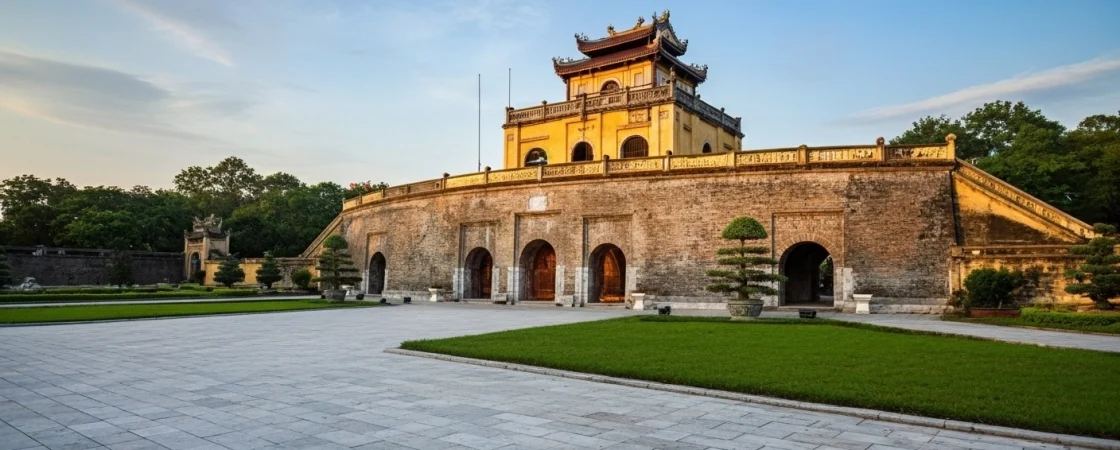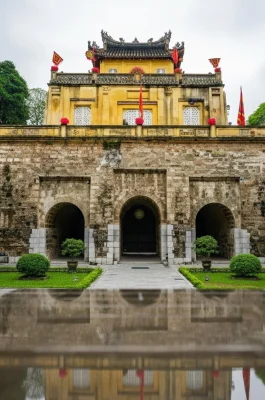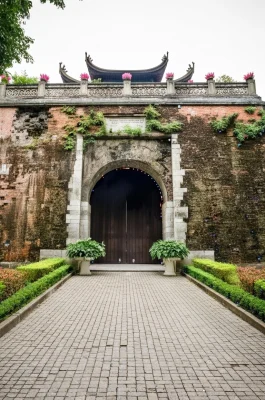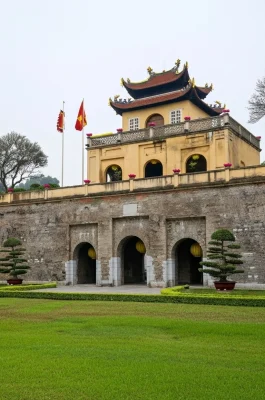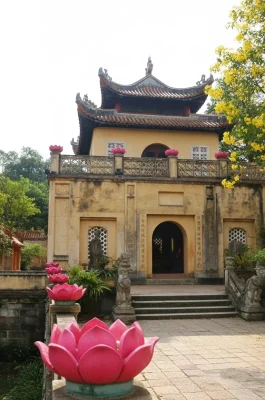The Imperial Citadel of Thăng Long is a sprawling complex of historical relics and an active archaeological site in central Hanoi. Recognized as a UNESCO World Heritage site, it stands as the political and cultural center of Vietnam for over a millennium, spanning the Đại La, Lý, Trần, Lê, and Nguyễn dynasties. It offers a fascinating journey through Vietnam’s deep history, from ancient royalty to modern wartime command centers.
I. History & Cultural Significance
Thăng Long – The Soaring Dragon: The history of the site dates back to the 7th century. It became the central power base in 1010 when Emperor Lý Thái Tổ moved the capital to what he named “Thăng Long” (Ascending Dragon).
Center of Power: For 13 consecutive centuries, the Citadel served as the seat of Vietnamese dynasties, surviving repeated invasions and periods of upheaval. The present complex blends ruins and restored buildings from various eras.
UNESCO Status: The site earned its UNESCO recognition in 2010 due to the exceptional evidence of a continuous political center, particularly the massive archaeological finds at the adjacent 18 Hoaˋng Diệu site.
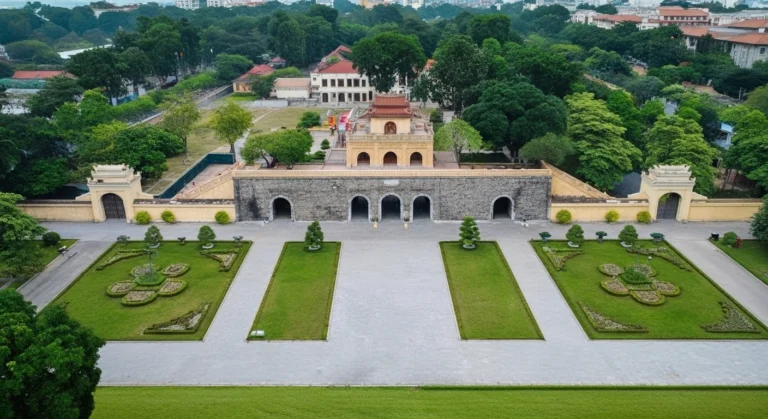
II. Key Attractions
The complex is divided into historical relics and the archaeological excavation area:
Đoan Môn (Main Gate): The magnificent southern gate, featuring a watchtower with five arched entrances, once reserved for the King and high-ranking mandarins.
Kính Thiên Palace Foundation: Only the grand stone staircase and its intricately carved stone dragons remain from what was once the most important ceremonial palace, offering a glimpse of Lê Dynasty sculptural art.
Hanoi Flag Tower (Kỳ Đài): A prominent 33 meter-tall structure built in 1812. It remains one of the few original structures to survive the French colonial period and is a modern symbol of Hanoi.
D67 Revolutionary House and Bunker: A stark contrast to the ancient ruins, this modern building served as the General Staff Headquarters and a secret underground bunker for the North Vietnamese military leaders during the American War (Vietnam War).
18 Hoaˋng Diệu Archaeological Site: The most historically revealing section. Visitors walk on platforms above ongoing excavations, viewing the preserved foundations, wells, and relics from various dynasties, some dating back to the 7th century.
III. Practical Information
| Detail | Information |
|---|---|
| Address | Main entrance at 19C Hoàng Diệu Street, Ba Đình District, Hanoi. |
| Opening Hours | 8:00 AM – 5:00 PM daily. Closed every Monday. |
| Entrance Fee | Adults: VND 70,000 (Note: Some sources cite VND 30,000 or VND 100,000. VND 70,000 is the most commonly cited current price). |
| Discounts | Students (with ID), seniors (≥60) are often 50% off. Children under 15/16 are generally free. |
| Telephone | +84 24 3734 5926 |
| Getting There | Located near the Ho Chi Minh Mausoleum and Ba Đình Square. Easily accessible by taxi, Grab, or bus (Route 22 stops nearby). |
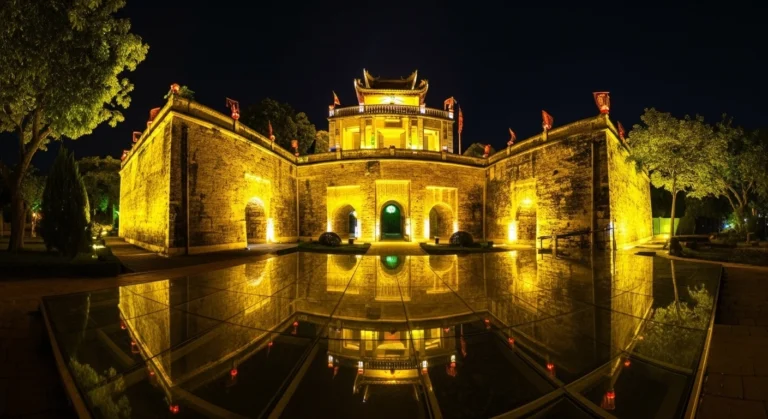
IV. Travel Tips
Dress Code: While not as strict as the Ho Chi Minh Mausoleum, respectful attire is encouraged, covering the knees and shoulders.
Guided Tours: Consider taking a guided tour or utilizing the provided site map and information boards to fully appreciate the complex layers of history at the archaeological site.
Night Tour: The Citadel occasionally offers a specialized “Decoding the Imperial Citadel of Thăng Long” night tour, which includes historical re-enactments and lighting displays for a unique, immersive experience. Check the official site for availability.
Combine with: Its location makes it an easy combined visit with the nearby Ho Chi Minh Mausoleum Complex and the Hanoi Old Quarter.
